Sanem Kalfa’s Festival residence at North Sea Round Town Rotterdam - Part two
a pure tour of lure…


Artists in residence usually give a few concerts at jazz festivals with different line-ups, also due to the short duration of many festivals. Eleven concerts however during a 14-day period of the festival, all with different line-ups, at different locations, that’s some different stuff and undoubtedly extraordinary: a challenge of one of a kind. It boils down to giving another type of concert almost every day/night.
Which contrasts rule, what is the range of the different kinds and how the artist’s identity emerges, is manifested through it? It should all be considered connected to the shape, reach, ambition and components of the festival as a whole. This will be about one artist’s residence reflected in the context of community based festival with its 350 concerts.

Churches
During her residence Kalfa played in three Rotterdam churches, the Old Church Charlois, the central Laurens Church and near Rotterdam Central Station the Paradise Church.
In the Old Church Charlois she sang as member of Teis Semey Midnight Mess Ensemble. Last year’s NSRT Artist-In-Focus, guitarist Teis Semey, performed his MIDNITE MESS opus in the huge space of Rotterdam’s Laurens Church together with four vocalists, Liva Dumpe, Fuensanta Mendez, Sanem Kalfa, Marta Arpini, and Kit Downes on church organ.
This year Teis Semey returned with the opus, that is based on Danish church music he experienced in his childhood and youth. In a more bare and intimate version at the more quietening church space of the Old Church in the Rotterdam borough of Charlois it was performed on the occasion of the album release of the music.

The instrumental side with Teis Semey on acoustic guitar and Kit Downes on church organ and the two-plus-two vocal side of Liva Dumpe and Vera Morais plus Sanem Kalfa and Marta Arpini embedded each other in great confluence thereby inducing ‘Albatross Music’ in the quieting space of the church. The four heaving voices were shaping air waves to levitate albatrosses in full majesty.
Church music is one of the most robust types of music. It had to speak to ordinary people, pull them into the melodic flow immediately, had to be easily recognised, remembered and should evoke a feeling of togetherness and communion strengthened by elevating qualities of its mediating role between heaven and earth. Considering that its melodies were often derived from folksongs and folk dances you could also say its mediating role between dance, praise and acceptance.

In the versions of Semey’s group the music got a more ambient, heaving and soothing character inviting listeners to surrender to and meditate in it. The singing voices created an airy stream of delicately colouring layerings and confluences thereby renewing itself time after time. Part of this were of individually soaring voices, vortexes that fed and upheld the inner subliminal tension and liberating joy.
It was a meaningful transformation, also interesting to compare with the approach that Norwegian pianist Christian Wallumrød applied to fragments of church music with his acoustic sextet. Semey and his fellow musicians provided a vital, softly glistering noon time.
Laurens Church is the biggest church building in Rotterdam. Its nave is a huge cathedral space of deep reverb. Kalfa and Boerema acted from the high organ gallery in the front of the church visible as small spots up there. The sound was all the greater with immense crescendo of the organ and Kalfa's high flighting heavenly voice, a unique memorable occasion to experience. Boerema was a challenging musical partner with inventive manoeuvres on the big organ to contribute to Kalfa’s music making.
Saint Nicolas Basilica (Amsterdam): rooftop duo concert w/ Teis Semey
The duo concert wasn’t part of the NSRT festival program. It fell on a night between the duo with trumpeter Peter Somuah at the Machinefabriek in Rotterdam and the duo with George Dumitriu at Rotterdam Paradise Church. There were several good reasons to attend it. It would reveal another side of Kalfa’s artistry and the place of the concert is a dream. It is a roof terrace framed by an apartment building and the Saint Nicolas Basilica, where Yulia Bachvarova organizes concerts for the residents of the apartment building.

As said there were reasons and the experience was more than affirmative. Yes, the core were Abba songs rendered by the duo in their very own tempting lovingly way. But there was more. The course of the concert and the way being carried by the audience finally brought them to a touching rendition of Cole Porter’s “Every Time We Have To Say Goodbye” (from 1944). Singing this song indeed is a question of the right moment on the right wavelength. It fitted in here wonderfully and evoked the deepest touch of the night. The vibe was amazing and the music unfolded naturally, found its place in the space (and the souls), clear so clear.


Kalfa and Semey apparently have a special rapport with each other, are kindred spirits on a higher level: in the way they approach music and performing. They don’t need much time to prepare for example an Abba song due to quickly grasping each other’s wavelength, bottom line, role and personal attack. That suffices to enable both of them to draw from the rich, sophisticated reservoir and let it bear fruit in the performance itself. The working of it is a question of deep trust in each other’s capacities and personality. It can lead into more than astonishing outcomes.

The concert had an amazing lightness, inner strength and dazzling charm that still increased with every further song. The music inherited a special force, the force of a real feeling coming across as REAL. That turned out strongly on the highly receptive vibe of the audience.
And then there is the acoustic guitar of Semey, a story in its own right. It’s a guitar he used in the duo work, but also in the Midnite Mess Ensemble. It’s a quite old, simple guitar looking a bit wrecked. You must have a special loving relationship with such an instrument. And you not should accept the limitations of such an instrument, but should also turn it into an advantage. And that’s obviously what Semey noticeably realises in his performance practice.
Paradise
The next day from Amsterdam back to Rotterdam concert grounds at the Old Catholics’ Paradise Church (what’s in a name!). A well-known successful duo now for 16 years, Sanem Kalfa and her duo-partner George Dumitriu decided to make a substantial jump and make up real new repertoire for their ongoing journey.

They premièred it as part of Kalfa’s residency as ARTIST-IN-FOCUS program at Rotterdam’s North Sea Round Town festival in the PARADISE CHURCH. New yes, and how! As open, playful and lyrical as before but now with edgier electric parts as well as (poly) rhythmic sharpness, irregular bouncing patterns and rougher textures - all of course ultimately song-bound on a higher plan. Kalfa’s vocal movability and flexibility, her courageous and richly shifting expressiveness, it’s all present here on a high level. The knife is sharper, the horizon broader, the balladeering and lamento cut even deeper.

The concert was full of touching surprise - even for those familiar with the duo’s signature. The concert happened at the Paradise Church in the centre of Rotterdam. It’s a church of the Old Catholics. It was Kalfa’s third church concert in 10 days. The other two concerts happened at Lawrence Church and at the Old Church of the Charlois borough of Rotterdam.
North Sea String Quartet w/ Sanem Kalfa at Batavierhuis
Kalfa’s concert with a string quartet was surprising in many respects. Normally a string section acts in an accompanying role of a vocalist. In this case the string players and the vocalist for a greater part acted as equals.

That meant that the string players George Dumitriu (violin), Pablo Rodriguez (violin), Yanna Pelser (viola) and Thomas van Geelen (cello), took initiatives in a variety of directions. It revealed as a wildly grooving bunch dragging, bending, countering etc. dynamically alternating with painting background in daring moods, astonishing shadings and rich colours, driving the music rhythmically with their intense pizzicatos. In lively manner they worked their way through a rich variety of Brazilian, Turkish and Cuban songs. The music wasn't yet honed and perfected, it thrived on looseness, spontaneity and the roughness that came with it - again a different side of Kalfa’s musical expressiveness.
More duos: Peter Somuah, Tineke Postma
Kalfa played two duos, one with saxophonist Tineke Postma at the Driebergen farmhouse and one with young trumpeter Peter Somuah in town at De Machinist.

De Machinist is a former building of the Shipping and Transportation College. Presently it is a multifunctional leisure centre that also organises concerts as this and few other concerts of NSRT. Peter Somuah is a trumpeter of Ghanaian origin that made his way in Rotterdam and from Rotterdam into wider circles. I saw him performing recently three times: at Music Meeting in Nijmegen where he guested high-life legend Gyedu-Blay Ambolley & His Secondi Band, in the NSRT program with his own group at Skateland in Rotterdam and in duo with Sanem Kalfa at Machinefabriek in Rotterdam. With his Rotterdam group he has an album out on the German ACT label.


Voice and trumpet are natural soul mates and so there are quite some trumpeters doing vocals too, from Louis Armstrong to Arve Henriksen. Here it was divided between two musicians. Somuah is a rather restrained musician who immerses himself very much focused in his playing without any external posturing. He has a warm elegant tone that can carry and envelop his funky own group and as such ‘stands’ and ‘stays' firm in the free improvising duo with Kalfa. Standing on a distance from each other facing the audience side and not each other, their lines and sonorities connected and mingled in a cooler way concentrated on the sound. Their stories came from further away and eventually were blending into something conjointly, hovering in their common space.


The musical haystack of Driebergen Farm was also the place where Sanem Kalfa and saxophonist Tineke Postma met for a duo concert. A vocalist and saxophonist, a not so usual combination (even with presently a lot of sophisticated electronics)


Which element will be leading, how will confluence establish itself? It turned out as a light, pointillistic, happy Traum affair fully unfolding and finding its place the best in the breeze with eyes shut. No roaring soaring sonics rather fine traces of sound, shimmering like light on a spring day. Prepared but fully absorbing in the moment - that kind of elusiveness.
Start and Finish
As a pre-opening of the festival in May Sanem Kalfa (voc, cello), Lucija Gregov (cellos), Alice de Maio and Kelly Bigirindavyi (dance) presented their 3-days Music/Dance Xpression laboratory at the farm on the stage under the hay store roof. Kalfa has worked with de Maio earlier in Alexis Blake’s “rock to jolt [ ] stagger to ash” performance art piece at Stedelijk Museum in Amsterdam and de Maio participated in Kalfa’s INVISIBLE COLUMS project. Bigirindavyi participated in the dance piece of former NSRT Artist-in-Focus Sun-Mi Hong.

With recent personal fate as point of departure, from the dancers’ sweeps and the musicians’ soundings tableaus emerged, morphed dynamically and took stronger shapes, sometimes resolving and sometimes leaving inner questions marks. Kalfa, Gregov, de Maio and Bigirindavyi took their time to let it grow and flow, allowing the audience to dive in, to go on distance or float.








There were strong moments and of course it was no finished product but work in progress that showed possibilities where to go further. The introductory personal story telling was quite informal and could have profited from some more dramaturgical shaping. The non-finite form however is a normal feature of this introductory lab. The images it produced appealed to the imagination of the beholder and induced a strong relation with the musical movements and the body movements.
Solo at Boijmans van Beuningen
Boijmans van Beuningen is the most prestigious modern art museum in Rotterdam. Sanem Kalfa’s solo-concert took place in the new depot of the museum (2021), the world’s first museum depot that is open and accessible for the public.

The building of this new art depot has a circular vase form with a striking mirroring façade (6609 square meters of glass divided into 1664 mirrored panels). The building’s outside reflects its green park surroundings and Rotterdam skyline. All art storage facilities arranged in fourteen storage compartments with five different climates are publicly accessible. Next to the objects, all activities that go into preserving and managing a collection are an open view in the building. In addition, the Depot building, designed by MVRDV architects, provides space to store private and corporate collections. The Kalfa concert took place in the space of the Rabo Bank art collection.


This solo-concert amidst wild art objects made from paper, leaves, audio cassettes and other unusual materials was the finishing act of Kalfa’s NSRT residence. It turned out as a light as well heavy resumé of the 12 concerts that preceded.
She unfolded a breathtaking rich variety of her astoundingly unique, deeply grounded and original artistry as a vocalist accompanying and embedding her voice on cello, percussion, electronics and ukulele. Navigating through delicate and delicious moods and bold mood changes, the performance evidently let no one of the watching and listening audience in the intimate context untouched. She never ‘played pieces’. The pieces emerged from a stream of musical consciousness which triggered and fed her intense, sensitive and touching pieces.

Through her way of embodying her music in flowing pointed movements, gestures, gazes and mimics, he took her audience in, made her musical soul between whispers and cries not only ‘readable’. It became intensely experienceable along the curves that her amazingly flexible voice draws into the air. It was clearly noticeable how tension and attention increased and a major part of the audience united with Kalfa, more and more ‘crawling in’ her playing. The force of her artistry lies in the real feeling coming across REAL with a lived natural elegance. Melancholy, sweetness, sensuality darkness, disgust, despair, happiness get expression in the fascinating tones and tonalities she finds and articulates with her voice without beautifying or soothing fits.
Surprise, survive, surrender
It all finds expression also in the ever flowing change of her mimics. In all this she is unpredictable and surprising, letting you experience that certain known things can be just a bit different from what you thought or was made to belief. Time after time she opens little hatches and glimpses on something between or beyond utopia and dystopia. She taps into reality, transforms it and carries her audience off to precious liberating moments.

The depth and density of her improvising flow manifested itself on the occasion of a small accident during her performance. A hanging microphone came loss and fell with a crashing sound. She went on singing her line in high register, integrated the crash sound in the ongoing music while fixing the mike. This was not first time that I saw her acting this way. She doesn’t perceive these happenings as clash or disorders but as natural events that in everyday life just happen (all the time) and are part of normal life.
It is a good moment to say thank you from my side to the artist for lovely guiding, patience, unbelievable perseverance, clear presence and beautiful wild music making. Also for me as a writer it was an extraordinary, unique and intense journey along all the concerts with its preparatory and afterwards time. I am grateful for having been enabled to experience this up close.
After this finishing concert a heavy rain shower came down, marking the transition to the next round of concerts. Sanem Kalfa went straight through to another venue in Rotterdam, Ahoy, and another festival, the three-days North Sea Jazzfestial, the world’s biggest indoor-jazz festival where she performed as part of the Ensamble Grande of Fuensanta Mendez. It was proof of Kalfa’s unremitting artistic activity and proof that Rotterdam was permeated by jazz and related elements to its very pores during this summer period.
Text & photos © Henning Bolte
Other
In case you LIKE us, please click here:
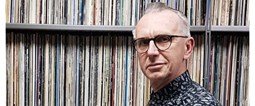
Foto © Leentje Arnouts
"WAGON JAZZ"
cycle d’interviews réalisées
par Georges Tonla Briquet

our partners:
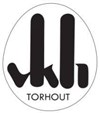


Hotel-Brasserie
Markt 2 - 8820 TORHOUT
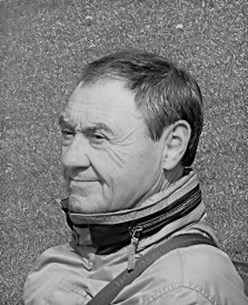
Silvère Mansis
(10.9.1944 - 22.4.2018)
foto © Dirck Brysse
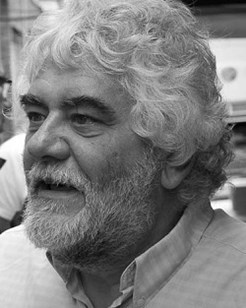
Rik Bevernage
(19.4.1954 - 6.3.2018)
foto © Stefe Jiroflée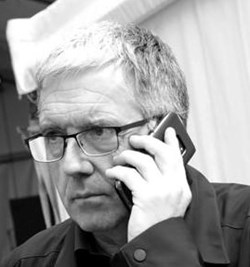
Philippe Schoonbrood
(24.5.1957-30.5.2020)
foto © Dominique Houcmant
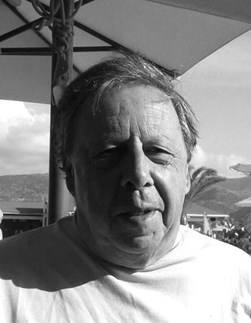
Claude Loxhay
(18/02/1947 – 02/11/2023)
foto © Marie Gilon
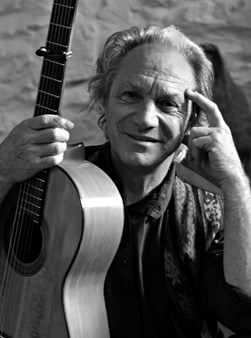
Pedro Soler
(08/06/1938 – 03/08/2024)
foto © Jacky Lepage
Special thanks to our photographers:
Petra Beckers
Ron Beenen
Annie Boedt
Klaas Boelen
Henning Bolte
Serge Braem
Cedric Craps
Luca A. d'Agostino
Christian Deblanc
Philippe De Cleen
Paul De Cloedt
Cindy De Kuyper
Koen Deleu
Ferdinand Dupuis-Panther
Anne Fishburn
Federico Garcia
Jeroen Goddemaer
Robert Hansenne
Serge Heimlich
Dominique Houcmant
Stefe Jiroflée
Herman Klaassen
Philippe Klein
Jos L. Knaepen
Tom Leentjes
Hugo Lefèvre
Jacky Lepage
Olivier Lestoquoit
Eric Malfait
Simas Martinonis
Nina Contini Melis
Anne Panther
France Paquay
Francesca Patella
Quentin Perot
Jean-Jacques Pussiau
Arnold Reyngoudt
Jean Schoubs
Willy Schuyten
Frank Tafuri
Jean-Pierre Tillaert
Tom Vanbesien
Jef Vandebroek
Geert Vandepoele
Guy Van de Poel
Cees van de Ven
Donata van de Ven
Harry van Kesteren
Geert Vanoverschelde
Roger Vantilt
Patrick Van Vlerken
Marie-Anne Ver Eecke
Karine Vergauwen
Frank Verlinden
Jan Vernieuwe
Anders Vranken
Didier Wagner
and to our writers:
Mischa Andriessen
Robin Arends
Marleen Arnouts
Werner Barth
José Bedeur
Henning Bolte
Erik Carrette
Danny De Bock
Denis Desassis
Pierre Dulieu
Ferdinand Dupuis-Panther
Federico Garcia
Paul Godderis
Stephen Godsall
Jean-Pierre Goffin
Claudy Jalet
Chris Joris
Bernard Lefèvre
Mathilde Löffler
Claude Loxhay
Ieva Pakalniškytė
Anne Panther
Etienne Payen
Quentin Perot
Jacques Prouvost
Renato Sclaunich
Yves « JB » Tassin
Herman te Loo
Eric Therer
Georges Tonla Briquet
Henri Vandenberghe
Peter Van De Vijvere
Iwein Van Malderen
Jan Van Stichel
Olivier Verhelst



